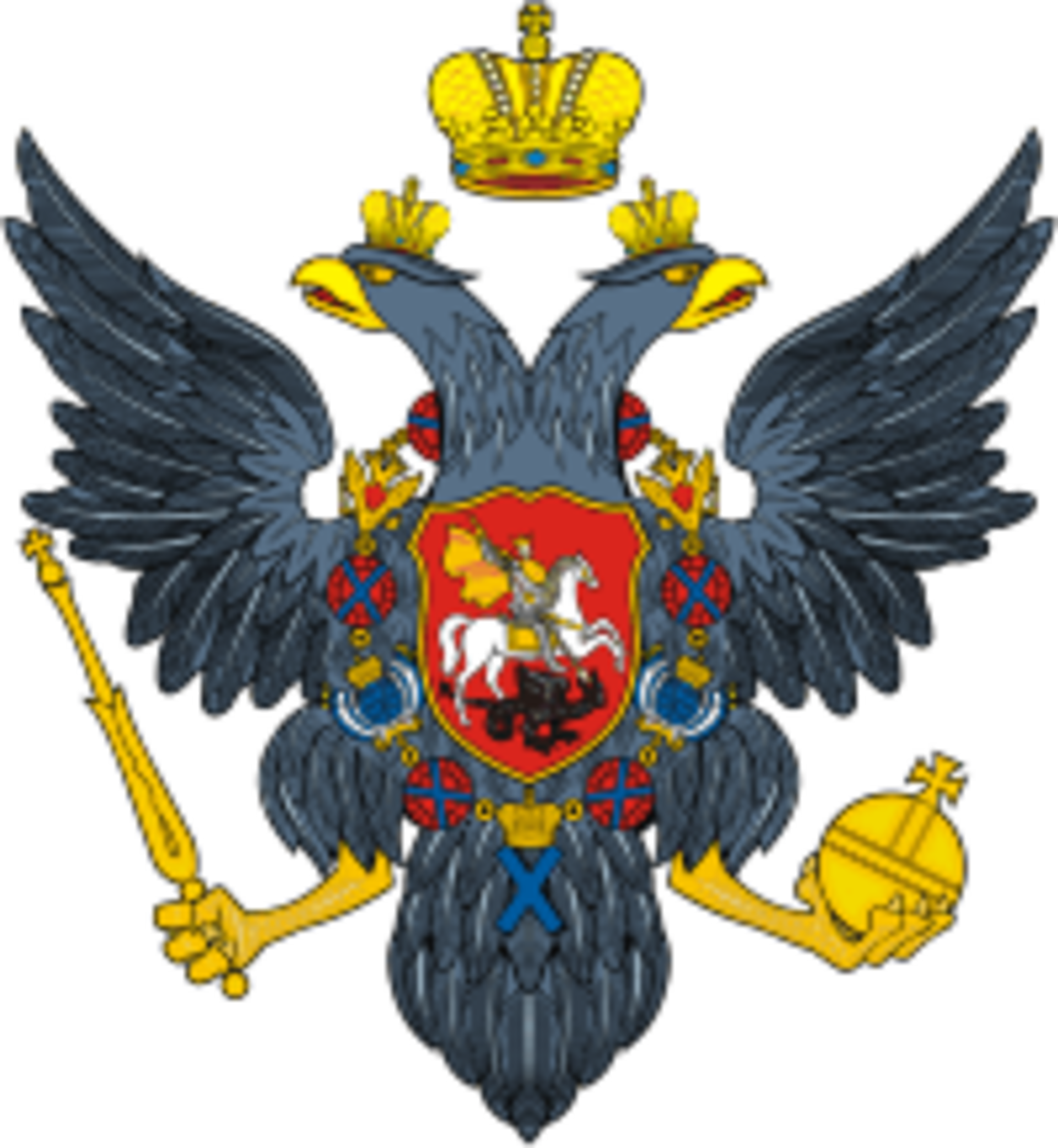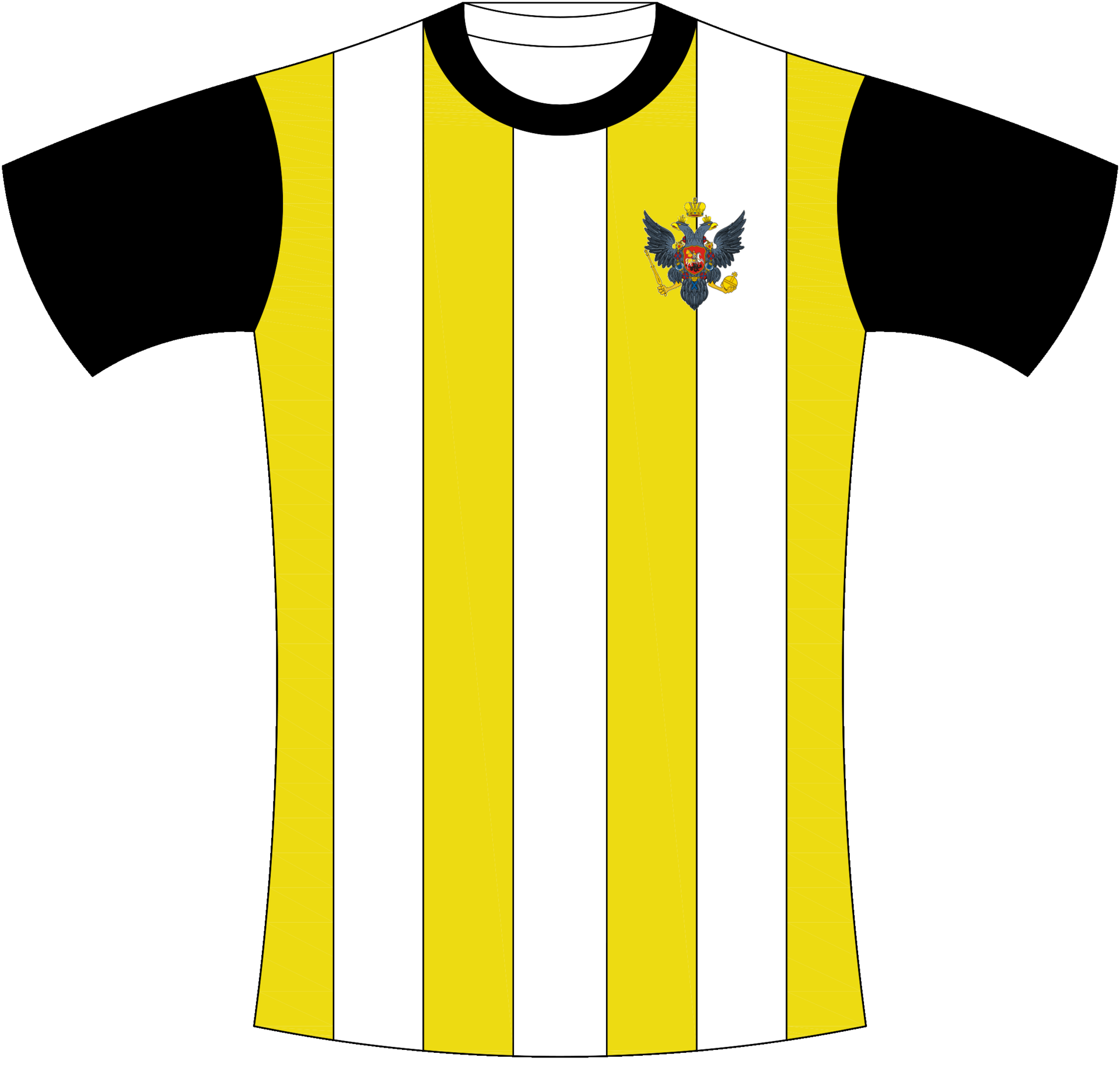Russian Empire
At the beginning of the 18th century, the Russian Empire began to embark on a process of forced decay, which would affect the division of Russian society and culture. Also under Emperor Peter the Great and his successors, especially Catherine the Great (1762-96), Russia expanded enormously, conquering areas along the Black Sea, east of Siberia and much of the eastern part of the Polish-Lithuanian state.

Coat of arms

Shirt
| Position | First name | Last name | Mjesto rođenja | Like | Dislike | |
|---|---|---|---|---|---|---|
| GK | Andriy | PYATOV | Kirovohrad |
3 |
2 |
|
| GK | Igor | AKINFEEV | Vidnoye |
15 |
4 |
|
| DC | Yevhen | KHACHERIDI | Melitopol |
1 |
0 |
|
| DC/DRL | Ivan | NOVOSELTSEV | Moscow |
0 |
1 |
|
| DLC | Ragnar | KLAVAN | Viljandi |
4 |
0 |
|
| DLC | Yaroslav | RAKITSKY | Pershotravensk |
5 |
0 |
|
| DRL/MR | Igor | SMOLNIKOV | Kamensk-Uralsky |
4 |
1 |
|
| DR | Vyacheslav | KARAVAEV | Moscow |
2 |
1 |
|
| DLC/ML | Fedor | KUDRYASHOV | Irkutsk |
4 |
0 |
|
| DLC/ML | Georgi | JIKIA | Moscow |
3 |
2 |
|
| DL/ML | Georgi | SCHENNIKOV | Moscow |
6 |
4 |
|
| DC/DMC | Roman | NEUSTADTER | Dnipropetrovsk |
2 |
1 |
|
| DMC | Denys | GARMASH | Milove |
0 |
0 |
|
| DMC | Igor | DENISOV | St.Petersbourg |
0 |
0 |
|
| DMC | Taras | STEPANENKO | Velyka Novosilka |
3 |
1 |
|
| MC | Aleksandr | GOLOVIN | Kaltan |
5 |
0 |
|
| MC | Pavel | MAMAEEV | Moscow |
4 |
1 |
|
| MC | Roman | ZOBNIN | Irkutsk |
0 |
0 |
|
| MRC | Aleksandr | SAMEDOV | Moscow |
3 |
1 |
|
| ML/DL | Dmitri | KOMBAROV | Moscow |
4 |
4 |
|
| ML/DL | Yuri | ZHIRKOV | Tambov |
0 |
0 |
|
| MRLC | Oleg | SHATOV | Nizhny Tagil |
2 |
2 |
|
| AMRLC | Viktor | KOVALENKO | Kherson |
3 |
0 |
|
| AMRL | Andriy | YARMOLENKO | St.Petersbourg |
0 |
0 |
|
| AMRL | Denis | CHERYSHEV | Nizhny Novgorod |
10 |
1 |
|
| AMRL | Yehven | KONOPLYANKA | Kirovohrad |
5 |
0 |
|
| FRLC | Fyodor | SMOLOV | Saratov |
4 |
1 |
|
| FRLC | Roman | ZOZULYA | Kiev |
7 |
1 |
|
| FC | Artem | BESIEDIN | Harkiv |
0 |
0 |
|
| FC/SS | Aleksandr | KOKORIN | Valuyki |
3 |
0 |
|
| FC/SS | Artyom | DZYUBA | Moscow |
9 |
1 |
The Russian Empire in the 17th century had to reconcile with the progress of Sweden and the Polish-Lithuanian state on the western borders, and the turn came for Peter the Great (1682-1725) from the Romanov dynasty, when Russia began to move away from elements of the Mongol heritage. The war for the conquest of the warm seas first began, beginning with the Azov on the Black Sea to the Baltic, where he enlisted as an ally of the Danes in the Northern War against Sweden (1701-22) whose epilogue would be to establish Russian domination in the Baltic.
Although, its economic imports depended heavily on English capital and technology, and English vessels were also key to their exports. Impressed with the cultural supremacy of the West and wishing to realize a grand project of turning Russian society towards Europe, Peter embarked on a forced westernization process, changing much of the Russian tradition. He limited the power of the Orthodox Church, and subordinated the interests of the nobility to the interests of the state.
In literature, as well as in the court, there were floods of German and French cultural influence, and as early as the 19th century many aristocrats would speak French. The biggest symbol of the westward was the establishment of a new capital - St. Petersburg, on the Baltic shores, which had replaced Moscow with its medieval and religious associations. Peter's reforms transformed Russia into a great power, but also introduced a deep division into Russian society and culture. During the 18th century, the nobility declined more and more, away from the clergy, merchants, and peasants who remained attached to traditional culture. What under him, what under his successors in the 18th century, especially Catherine the Great, Russia expanded enormously, conquering along the Black Sea, areas east of Siberia and the greater eastern part of the Polish-Lithuanian state, which would disappear by the end of its neighbors' territories century.
